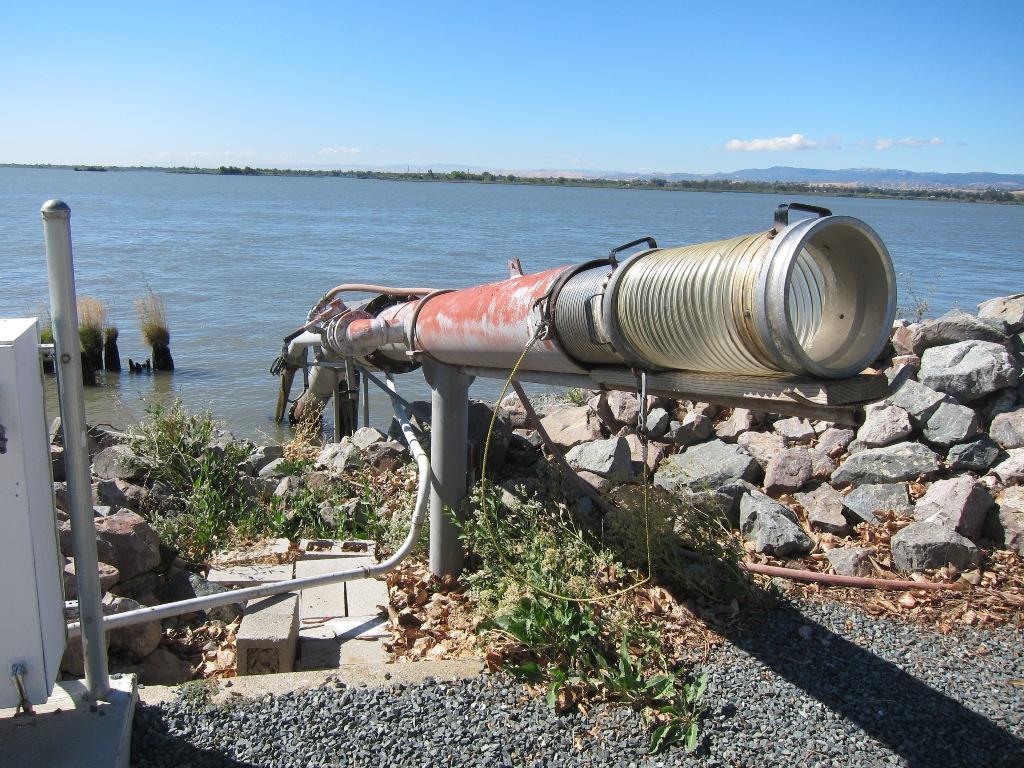
High losses of juvenile salmon and other native fish species occur at sites where state and federal water diversion staff dump fish yanked out of the Delta pumps. A 2010 study titled “Release Site Predation Study” by DWR, USBR and CDFW identified that up to 100 percent predation occurs at the end of the pipes that currently return the salvaged fish to the Delta. The conclusion of the study states, “Results of the release site predation monitoring suggest that predation at the release site by several species of fish and birds could have a substantial effect on the number of fish surviving the release phase of the salvage process.”
This project proposes that pipe releases be terminated and the salvaged fish be released into net pens to improve survival. Net pens are a proven better technology. An alternate to net pens under consideration would move tanker trucks loaded with salvaged fish onto barges. These would then be offloaded in a variety of locations where predators do not reside. Evaluations and conclusions on these options are needed. In 2009, the National Marine Fisheries Service released a biological opinion that requires these operations to reduce predation by 50 percent. It also required an evaluation of net pens or other better technologies. None of these have been completed or implemented. With one of these technologies, substantial improvements in juvenile salmon survival are expected during the peak Delta migration months of January through May. It is possible that older and larger Delta Smelt (50 to 70 mm) may also be successfully salvaged using these methods.
